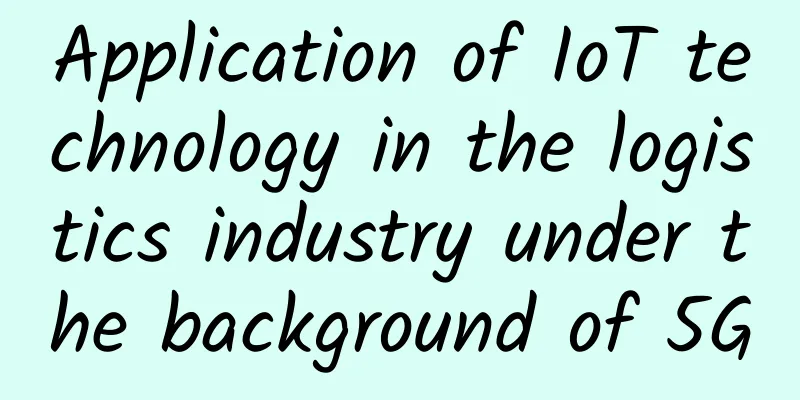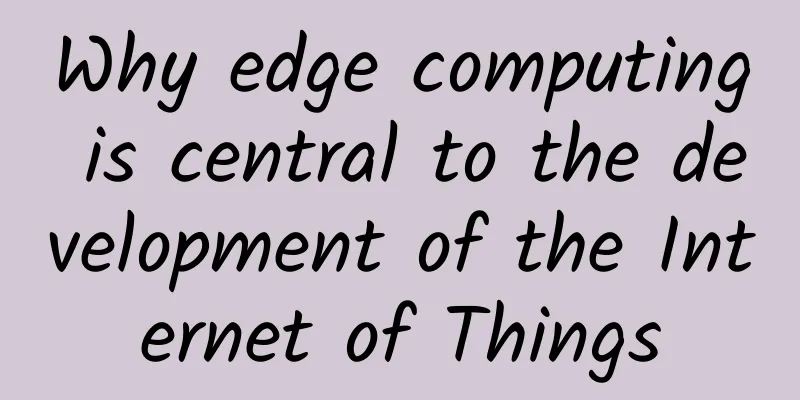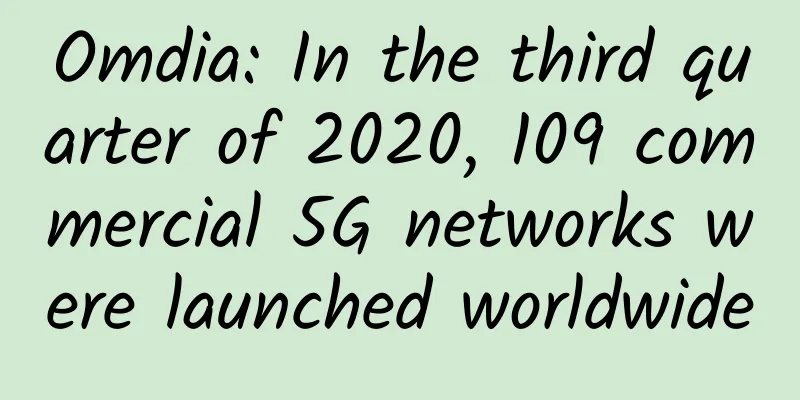Application of IoT technology in the logistics industry under the background of 5G

|
The Internet of Things has the characteristics of intelligent perception, fast and stable transmission, and intelligent processing, which can realize the perfect connection between any objects at any time and anywhere. 5G will improve the operational efficiency of the Internet of Things, thereby increasing the information transmission rate of the entire logistics industry. This article briefly describes the needs, business models, and system architecture of the logistics market, and analyzes the application function modules of the logistics industry, such as the application layer, network layer, and perception layer, in the hope of exploring the organic combination of "5G+Internet of Things" technology and its application in the logistics industry.
So far, there is no precise definition of "Internet of Things" in the world. Internet of Things usually refers to a huge network formed by combining various information sensing devices such as WSN (Wireless Sensor Network) nodes, RFID (Radio Frequency Identification) devices, infrared sensors, mobile phones, PDA (Personal Digital Assistant), GPS (Global Positioning System), laser scanners and other devices with the Internet. In this network, objects can "communicate" with each other without human intervention. In 2005, Kevin Ashton of MIT first proposed to apply RFID technology and sensor technology to daily objects to form an "Internet of Things" (IOT), also known as Web of Things (WOT). In the field of logistics, the Internet of Things can break geographical restrictions and realize a network of services such as information acquisition, transmission, storage, and integrated use between objects, thereby improving the informationization capabilities of the entire logistics industry. 1. The strategic significance of 5G+IoT5G+IoT is a new revolution after PC (Personal Computer), MI (Mobile Internet), CC (Cloud Computing), GPS, UAV (Unmanned Aerial Vehicle), and AI (Artificial Intelligence). Countries around the world have high hopes for its future development. The proposal of 5G+IoT embodies the concept of great integration, has the characteristics of short chain, wisdom and symbiosis, and has the advantages of fast, convenient and intelligent. It breaks through the traditional thinking of separating physical infrastructure and information infrastructure, and has great strategic significance. 2. 5G+IoT technology promotes the commercialization of the industryCompared with 4G/3G/2G mobile communication technologies, 5G not only has great advantages in bandwidth, latency, and power consumption, but also has the characteristics of security, efficiency, convenience, and speed. As the core architecture of the new generation of communications, the application of 5G+IoT in the industry will greatly accelerate its commercialization process. 1. Massive industry accessThe application of IoT in the industry has put forward higher service quality requirements for the network layer, requiring it to bear a larger amount of data than the existing network. The greatest value of 5G in the industry lies in the use of data, which makes data acquisition more efficient and can better coordinate various ends of the industry through data. By taking advantage of the low latency of the 5G network, all environments in the industry can obtain relevant industry information more quickly, intuitively and accurately, allowing data such as transportation and product loading and picking to reach the user end, management end and operation end more quickly, making data sharing and interconnection between each other closer. The perfect integration of 5G+IoT technology can provide more abundant services for the operation of the industry. The characteristics of intelligent massive access enable any node in the industry process to be monitored by its information management center, thereby improving the quality of industry services. 2. Industry scenario analysisThe access plane in the system structure of the 5G network is responsible for building the topology of the industry access network, the screening and redeployment of the industry network, etc. The control plane realizes the control and scheduling functions of the industry network, and the forwarding plane is responsible for forwarding and processing industry data. Combining the 5G network with the Internet of Things can form a new intelligent system, thereby establishing a new layer. The 5G+Internet of Things in the industry commercialization stage and layering are shown in Figure 1. Figure 1: 5G+IoT commercialization stages and stratification in the industry As a new generation of mobile communication technology, 5G is mainly used in ultra reliable low latency communications (URLLC), enhanced mobile broadband (eMBB) and massive machine type communications (mMTC). The Internet of Things is an important part of the new generation of information technology. Through information sensing devices such as RFID, infrared sensors, GPS, laser scanners, etc., industry information is connected to the Internet for information exchange and communication, and intelligent identification, positioning, tracking, monitoring and management of the industry are realized. 3. Industry commercialization process5G + IoT can do many things that humans cannot do. The seamless platform behind it enables countless devices to communicate with each other effectively, which can achieve efficient resource utilization, minimize manpower, save time, enhance data collection, and improve security. Supported by 5G slicing technology, various business scenarios can be integrated into an integrated industry system in the form of slices; high bandwidth, low latency, and wide connection, combining RFID technology, WSN (Wireless Sensor Network) technology, GPS technology, and digital earth technology with the Internet can expand the coverage of the Internet from "people" to "things"; each IoT device that is transformed can become a node that collects and generates data, and this number will be at the level of tens of billions or even trillions, thereby accelerating the commercialization process of the industry. 3. Application of 5G+IoT technology in the logistics industryIn the IoT smart business industry, it is necessary to establish an end-to-end complete system architecture for data collection, action execution, data aggregation, network transmission, data processing, data analysis, smart applications, business models, solution integration, and operation services. 1. Logistics standard system of 5G+IoTFigure 2: Logistics standard system in 5G+IoT The standard system framework is a description of the components of the standard system and their interrelationships. The 5G+IoT logistics standard system framework consists of five parts (as shown in Figure 2), namely: overall common standards, perception layer standards, network layer standards, server support layer and application layer standards. Through the establishment of a standard and specification system framework, we can implement demonstration projects in the field of logistics management and initially establish a logistics application system. Only by effectively combining the standard and specification system framework with the research and development of key technologies can we truly promote the healthy, standardized and orderly development of the logistics industry. 2. Logistics characteristics in 5G+IoTFigure 3: Logistics characteristics in the 5G era In the 5G era, China's logistics presents the "3S" characteristics (as shown in Figure 3) - Smartness, Short-chain, and Symbiosis. With the application of 5G+IoT technology in the logistics industry, smart logistics will not only provide more efficient, accurate, and personalized services in the near future, but also enable the entire logistics system to gradually achieve unmanned operation, intelligent operation, and intelligent decision-making. The so-called "smartness" means that at the operational level, robots and artificial intelligence technologies make the entire supply chain of warehousing, sorting, transportation, distribution and customer service intelligent; at the operational level, big data and artificial intelligence will drive the intelligence of the entire chain of warehousing, transportation and distribution; at the network collaboration level, the Internet of Things, big data and artificial intelligence realize logistics collaboration. "Short-chain" refers to precise supply, precise marketing, and precise services in the upstream, which will drive the optimization and upgrading of the entire supply chain system; short-chain will promote the flexibility of the entire supply chain and reduce logistics uncertainties and risks. "Symbiosis" refers to the new generation of logistics that promotes seamless connections between brands and consumers through end-to-end integrated services, helps de-channelize the entire distribution system, and reduces inventory costs; it adheres to the green and shared development concept to meet people's growing needs for a better life. 3. Logistics architecture in 5G+IoTBased on the low latency of 5G technology, its main application is to improve the reliability of communication, reduce the latency of communication, and achieve real-time communication in the true sense. The Internet of Things can be applied to all ends of the logistics industry, and has its place in many aspects such as energy supply, warehousing, logistics monitoring, and user services. The Internet of Things involves network security, information security, and privacy rights, and also requires a proper and reasonable solution. High-speed and high-bandwidth networks are channels that connect cloud servers and cloud storage at the infrastructure layer, as well as high-speed and high-bandwidth switches, routers, and optical fiber communication networks at the platform service layer and network layer. When implementing IoT smart services, appropriate wireless, wired, and satellite access networking technologies should be selected based on business application scenarios, transmission performance, networking characteristics, network security, standards and specifications, and construction and operation costs. Use RFID, sensors, QRC (Quick Response), etc. to obtain object information anytime and anywhere; through various network integration, business integration, terminal integration, and operation management integration, the object information is transmitted in real time and accurately; use cloud computing, fuzzy recognition and other intelligent computing technologies to analyze and process massive data and information, and perform real-time intelligent control of objects. Figure 4: Technologies involved in 5G+IoT logistics architecture The smart logistics architecture is a fully functional basic service platform. The system architecture is divided into three vertical layers: application layer, network layer and perception layer (see Figure 4 for the technologies involved in each layer). Since logistics data is a big data feature, the data layer basically uses a big data distributed platform. Each vertical layer will generate and use data stored in the data platform, so the data layer has an interactive relationship with each layer on the left. Artificial Intelligence (AI) technology mainly promotes the intelligentization of logistics architecture at the service layer. Big Data (Big Data) and Cloud Computing (Cloud Computing) technologies will be applied in the top three layers. Finally, Blockchain (Blockchain) technology maintains the security system of logistics. IV. ConclusionWith the growth of IoT devices and their demand, advanced connection networks are the basis for realizing the interconnection of all things, so 5G came into being. From the development trend of the logistics industry, the continuous deepening of supply-side structural reforms, the new generation of logistics can reduce the logistics costs of the entire industry chain and improve the quality of logistics supply. At the same time, it can also improve total factor productivity and gradually release new momentum for the development of the industry. In the end, the logistics industry, which shows a new trend, will become a strong driving force for the domestic economy. 5G has the advantages of ultra-high reliability and ultra-low latency, enabling the logistics industry to manage production and operations in a more sophisticated and dynamic way. From the perspective of time, the speed of logistics development depends on the orientation and support of national macroeconomic policies, the progress of technology, the formation, coordination and growth of the industrial chain, otherwise it will be a very long, self-sustaining random process. |
<<: Verizon and Honda collaborate on 5G and edge computing to make driving safer
>>: A comprehensive review of the main concepts of K8S!
Recommend
80VPS: Japan/Hong Kong CN2 server 600 yuan/month, E5/16G/1TB/20M bandwidth
80VPS is an early-established comprehensive netwo...
Goodbye, endless pop-up ads
In recent years, with the rapid development of mo...
Tencent Cloud offers a 40% discount on domain name renewals, com renewals for 39 yuan, cn renewals for 21 yuan
Friends who have domain names in Tencent Cloud ca...
Things about WKWebView on iOS
[[413463]] Background Students who are familiar w...
Lightwave OFC 2025 Outlook: Quantum will take center stage
Beijing time, February 19 (Shui Yi) As the world&...
HostKvm newly launched Russia/Hong Kong high-defense VPS, 50% off for Mid-Autumn Festival
HostKvm has launched new products, this time with...
Animation: How does a browser work?
For most of the front-end developers interviewed,...
Recommend a lightweight and fast file transfer tool for LAN
Project Introduction Fluxy is designed to provide...
South Korean court rules that network operators can charge broadband fees to big data users like Netflix
As the video streaming market explodes, a South K...
China Mobile's 10-year old users will enjoy four major privileges. Netizens: How can China Unicom put its face?
For a long time, the relationship between the thr...
Cisco HyperFlex, the world's most complete hyper-convergence architecture
[51CTO.com original article] Hyper-convergence is...
RackNerd: $18.18/year KVM-1GB/24G NVMe/2.5TB/multiple computer rooms available
RackNerd is a foreign VPS hosting company founded...
What does the interviewer want to test us about the three-way handshake and the four-way wave?
In an interview, three handshakes and four waves ...
Summary of the third phase of 5G technology R&D trials: the newly added 2.6GHz frequency band is consistent with the 3.5GHz test results
On January 23, 2019, the IMT-2020 (5G) Promotion ...
How can operators play the 5G messaging card well?
5G is a technology that can rewrite the "rul...









